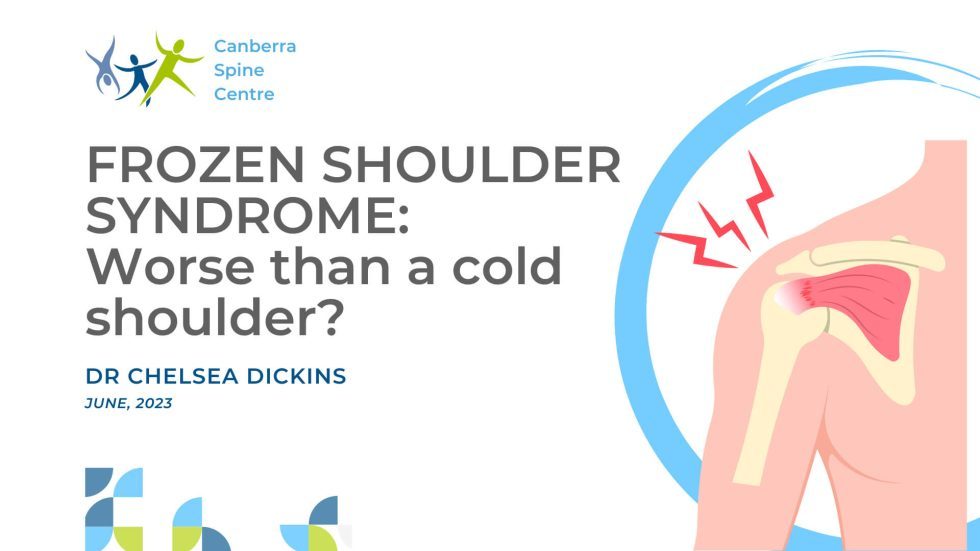
Frozen Shoulder, often referred to as Adhesive capsulitis (AC), is a painful and debilitating condition experienced by around 10% of the population at some point in their lives.
Despite this, it has been poorly understood and thus often poorly managed.
Shoulders are so important in our day-to-day function.
Cooking, cleaning and bathing are such essential parts of life and most people who have had frozen shoulder will speak on the debilitating impacts of day-to-day activities.
In this article, you’ll learn what Frozen Shoulder is, and what can be done about it.
Frozen shoulder – caused by cold weather?
Frozen shoulder has more recently been defined as an auto-immune disorder because it involved an inflammatory process, with the body attacking itself.
Frozen shoulder is a “freezing” of the synovial joint (the sleeve around the joint that keeps the fluid inside) of the joint between your upper arm and shoulder blade (the glenohumeral joint).
When frozen shoulder occurs, you lose the majority of motion and have a large amount of stiffness with lack of function from this joint.
3 stages of frozen shoulder
- The freezing process. This is part here your body attacks the joint lining and beginning to stiffen. It typically takes 6 months.
- The setting. This is typically the more impacting stage. The shoulder has its minimal movement and it sets for another 6 months.
- The de-frost. Over the next 6 months, the shoulder begins to regain movement and restore to usually full function.
Frozen shoulder is most likely to affect females over the age of 50. It usually only affects one side, but can affect both.
Typically, it is an 18 month process, but may last up to 4 years in duration when poorly managed.
Can chiropractors help with frozen shoulder?
This process is quick to occur. The first six months is the time when the condition can be improved quickly with appropriate treatment.
Whenever we work with an extremity, such as the shoulder, chiropractors take a global approach.
Not only working to improve motion and function of the shoulder, but also those of all the influences on the shoulder – the cervical and thoracic spine, and even the pelvic motion and alignment will influence shoulder motion.
Maintaining you function and movement throughout this initial period is so important for minimising the “freeze.” Neurologically, the neck and spinal nerves are vital for good movement of the shoulder and arm.
Chiropractors work to restore proper motion and neurological function to these areas to assist in proper function and healing. A thorough rehab program is also an essential part of our treatment regime.
What can I do to help?
As mentioned above, prevention or early action will achieve the best results. Notice your body. Are there new symptoms? Has a process started that you’re ignoring?
This is not something to delay. 6 months can go by very quickly, so check in with yourself.
What stretches are you doing day to day that would help you identify if something is happening?
ennis, basketball and golf players are in the clear due to the movements involved, you will notice this in your life, but so many people could miss early signs that allow early detection.
Always better to ask and work in a preventable way.
If you have any questions or concerns about your shoulder problems and you’re not sure what to do, please call us on (02) 6257 9400.
If you would like some more information about the spine and nervous system and how it relates to your health, please check the other articles on our Facebook page or go to our website: www.spinecentre.com.au.
